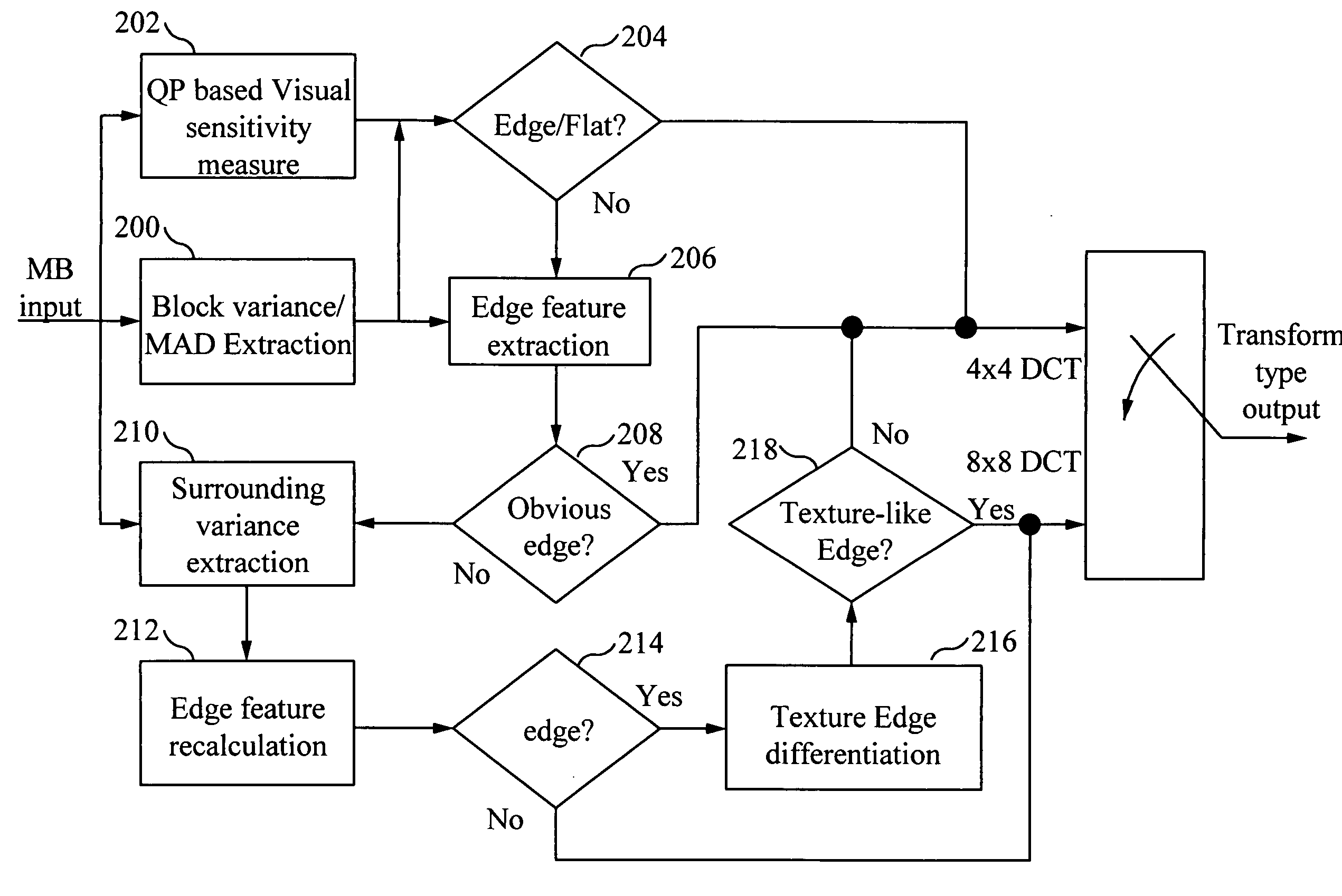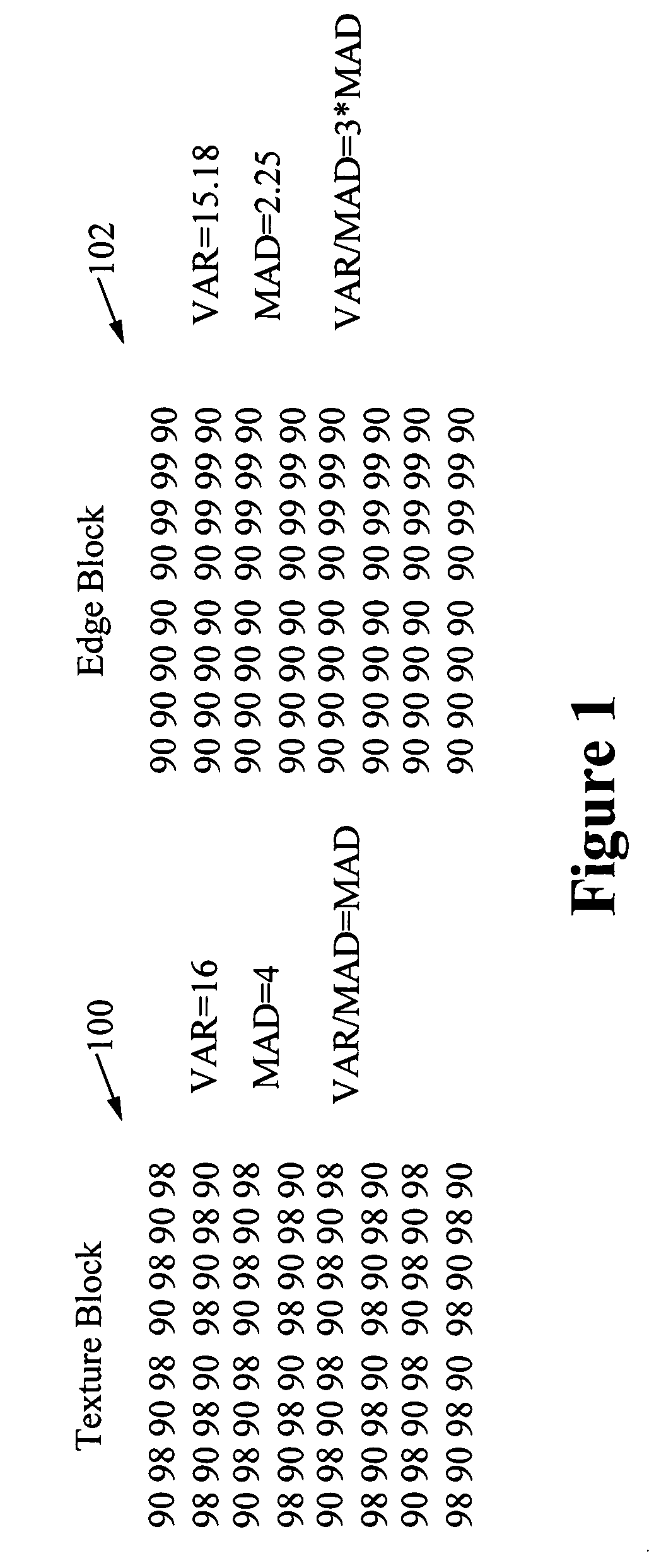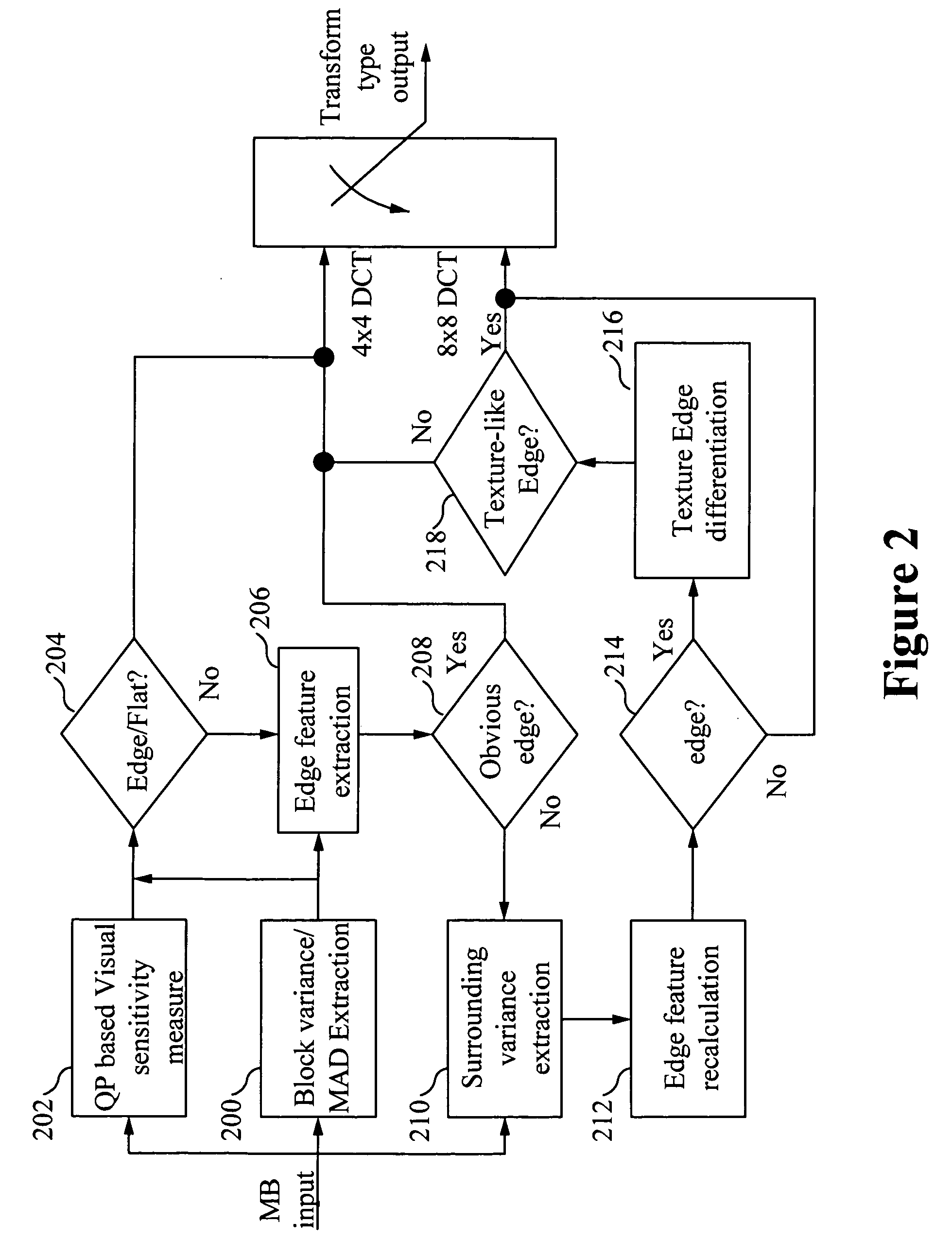Block based codec friendly edge detection and transform selection
- Summary
- Abstract
- Description
- Claims
- Application Information
AI Technical Summary
Benefits of technology
Problems solved by technology
Method used
Image
Examples
Embodiment Construction
[0028]H.264 / AVC design emerged with an improvement in coding efficiency typically by a factor of two over MPEG-2. It is desirable to use the superior coding efficiency of H.264 / AVC to directly benefit visual quality to the greatest extent. Among many important techniques in the H.264 / AVC standard, adaptive transform selection plays an important role to improve the compression efficiency. Visual fidelity is able to be significantly improved, particularly for movie sequences, by adaptively selecting 4×4 transforms and 8×8 transforms.
[0029]The 4×4 transform achieves better visual results in an edge area than the 8×8 transform. On the other hand, the 8×8 transform achieves better visual results than the 4×4 transform in a texture area. Therefore, accurate edge detection is required to obtain quality transform selection results. According to the H.264 / AVC standard, the 8×8 Discrete Cosine Transform (DCT) is only able to be used in inter predicted macroblocks when the sub-macroblock parti...
PUM
 Login to View More
Login to View More Abstract
Description
Claims
Application Information
 Login to View More
Login to View More - R&D
- Intellectual Property
- Life Sciences
- Materials
- Tech Scout
- Unparalleled Data Quality
- Higher Quality Content
- 60% Fewer Hallucinations
Browse by: Latest US Patents, China's latest patents, Technical Efficacy Thesaurus, Application Domain, Technology Topic, Popular Technical Reports.
© 2025 PatSnap. All rights reserved.Legal|Privacy policy|Modern Slavery Act Transparency Statement|Sitemap|About US| Contact US: help@patsnap.com



